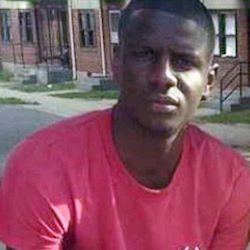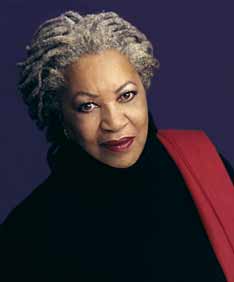
As the names of the unarmed casualties of police shootings continue to appear on our computer screens, many wonder how to speak in the face of the daily misrepresentation of systemic oppression. Some of the best responses in the days following the protests of Freddie Gray’s death were Ta-Nehisi Coates’s pieces for the Atlantic, but in those first hours of the night on April 28th, as protestors gathered to assert that black lives mattered, there seemed to be no measured voices in the media. How then, we may ask, do we begin to speak?
Without realizing it was the day of Gray’s funeral, I was in Montana reading Toni Morrison’s Home which I had started the day before. During a break before the next shift at work, I decided to sit down and finish it. I didn’t know that as I was reading media attention in Baltimore was shifting from Gray’s funeral to images of perceived looting, many of which were later disproved by those in the photographs. I didn’t know reporters were starting to ask about the cost of property damage when they hadn’t yet asked about the cost of lives.
Over the course of this year, I have been attempting to think intentionally about Morrison’s work, its themes, and its place in America today. In all my years of graduate school and college, I had been asked to read only one novel by our only living Nobel Laureate in Literature, Beloved, which was assigned in an African-American Literature course for my bachelor’s degree. Throughout my coursework for my master’s degree, her work, especially Playing in the Dark, was mentioned but never required. The book was occasionally used in my fellow students’ work, but glossed over as one of those books everyone said they understood but few had actually read.
 So, this year, in my first year as a non-student, I decided to read Morrison. I read her novels and Playing in the Dark throughout the first months of 2015 and was struck by how deep their wells ran. In her novels, time and again, Morrison takes on themes vitally important to American history and contemporary society: the ongoing and active construction of race, the violence inherent in race’s construction, and the generational differences that teach, stifle and impress upon us the importance of understanding how we live in America today. Each novel returns to these themes and, in sinking into them again, allows them to open up in startling ways with new voices. Like Faulkner’s Yoknapatawpha County or Steinbeck’s Western landscapes, Morrison’s writing of American history recognizes the through-lines so many of us often attempt to ignore, and, in the process, she captures the internal emotive landscape necessary to recognizing ourselves in today’s systems of oppression.
So, this year, in my first year as a non-student, I decided to read Morrison. I read her novels and Playing in the Dark throughout the first months of 2015 and was struck by how deep their wells ran. In her novels, time and again, Morrison takes on themes vitally important to American history and contemporary society: the ongoing and active construction of race, the violence inherent in race’s construction, and the generational differences that teach, stifle and impress upon us the importance of understanding how we live in America today. Each novel returns to these themes and, in sinking into them again, allows them to open up in startling ways with new voices. Like Faulkner’s Yoknapatawpha County or Steinbeck’s Western landscapes, Morrison’s writing of American history recognizes the through-lines so many of us often attempt to ignore, and, in the process, she captures the internal emotive landscape necessary to recognizing ourselves in today’s systems of oppression.
And so, as I approached Home, one of the last of her novels I had yet to read, I went to it not just looking for a story, a plot, and a cast of intriguing characters—although, arguably, that’s all we should expect of a novel, and Morrison certainly delivers—but I went to the book for insight into how one can ask questions of the self in our current context, how we can become reacquainted with ourselves and find our speaking voices again amidst the violence and misrepresentation that surround us.
I was not disappointed. In Home, I found Ycidra, a young woman beaten by patriarchy, racism, and experimented on by a white doctor, recalling so many awful histories through her individual story. And in the face of all of this, Ycidra, upon learning she’ll never have children, asks herself, “And what in this world did Cee love?” She moves to asking where her life can now go in the wake of the violence done to her, what she can focus on that would give her life renewed purpose.
I was struck by this moment as I read, but I have the sense that quoting this question without the two or three pages around it is false or easy. How is it possible, in the real world, for us to ask what we love in the face of so much oppression as Ycidra does? How is it possible, in the real world, for us to find a sense of identity enough to ask and maintain the question throughout our lives? What must it take to maintain self-discovery, recreating the moment of knowing that we can care for something in the world and make it better even as we and those around us experience so much pain?
As I’ve watched the news in the weeks since finishing the book, I’m glad I found Ycidra’s question to herself in Home, and this is why: Cee does not ask who is she to love, or why someone would love her, nor what has she done to deserve anything that has happened to her, because it’s more complicated. Instead, the model of Ycidra shows us how to ask after what we love and to aim for loving. Morrison is practical in positioning Ycidra at the heart of what it means to begin again.
I’ve been drawn to Morrison lately because I’ve been thinking about historical and social wakes as I’ve felt the swaying of the ones I’m in. Ferguson. Cleveland. Baltimore. But also all the others we don’t know by heart, and all the others we do but from a different era, an era we might align more often with Morrison’s work than with our own experiences. Watts. Detroit. Chicago. As Morrison later wrote in God Help the Child: “Memory is the worst thing about healing.” The resonances of the history we learned as children with the scenes we witness today remind me what a wake does: it continues. Even in the periods we don’t recognize it, the wake continues across the surface of the water and turns the dirt over with the silt.
and all the others we do but from a different era, an era we might align more often with Morrison’s work than with our own experiences. Watts. Detroit. Chicago. As Morrison later wrote in God Help the Child: “Memory is the worst thing about healing.” The resonances of the history we learned as children with the scenes we witness today remind me what a wake does: it continues. Even in the periods we don’t recognize it, the wake continues across the surface of the water and turns the dirt over with the silt.
Morrison’s characters, like Ycidra, speak to us today as they’ve spoken to us in the past and will in the future by showing us how to think continuously and intentionally about what or who we (want to) love in our lives and what or who we (want to) have in our lives and why. She does this so that we will see the wake for what it is so that maybe, just maybe, as we’re borne by the wakes we have ridden for so long and those we leave behind, we won’t need to return all the way to the shore we’ve already seen. Ycidra looks to what comes next because, even though it’s impossible to not see the past, she needs to move forward. After asking what in this world she loves, the narrator says, “She would have to think about that.” She cries, recognizes her need to cry, and then she’ll ask herself the question again in order to begin anew.




